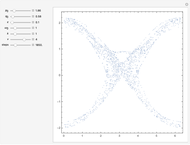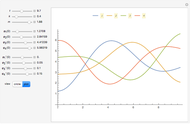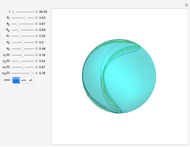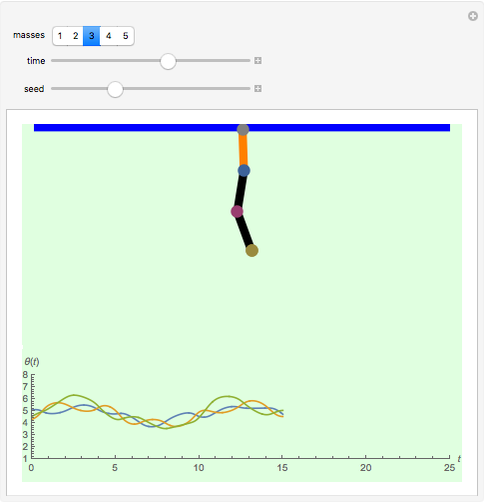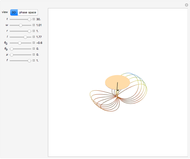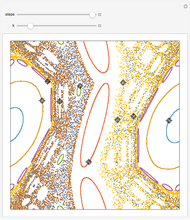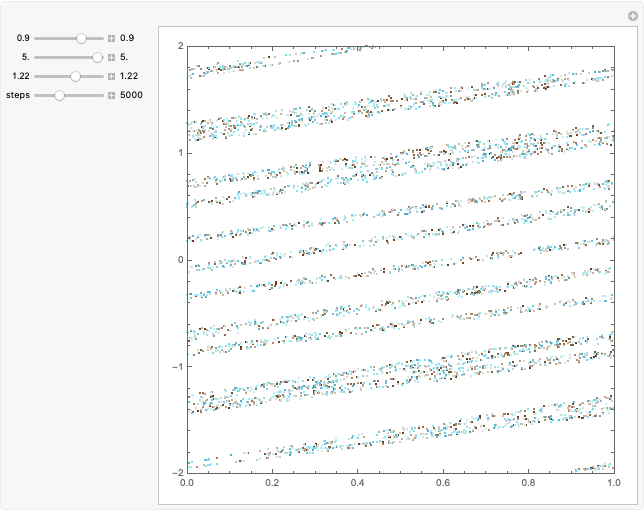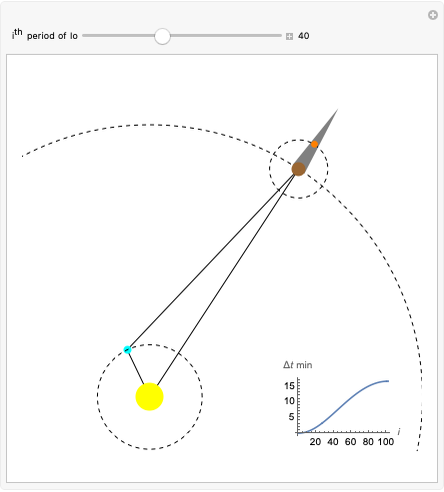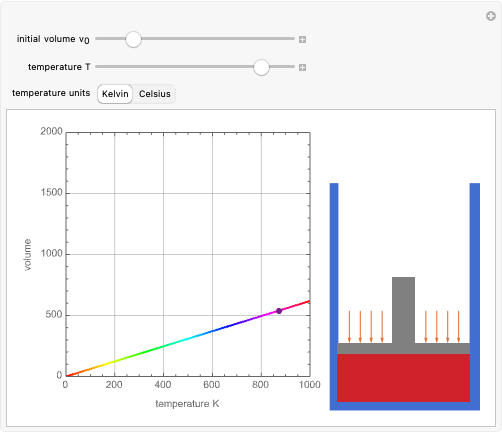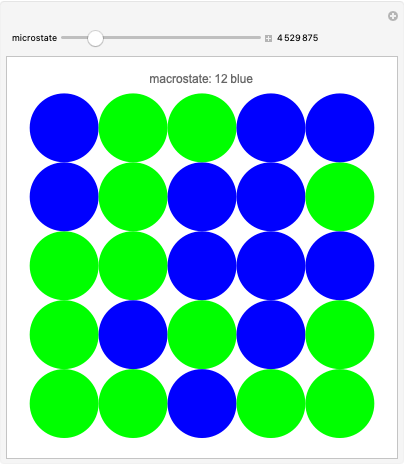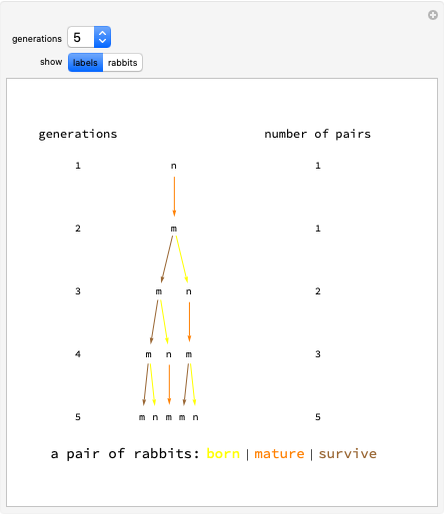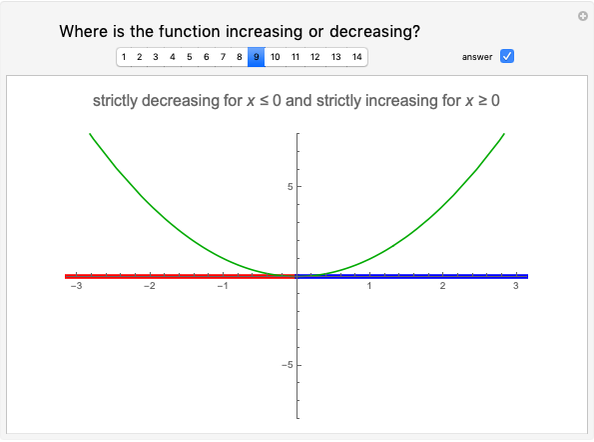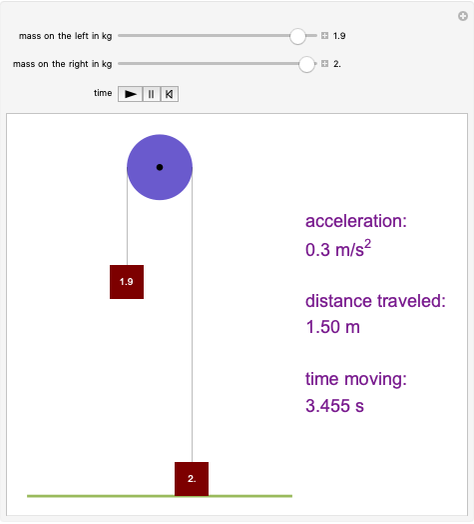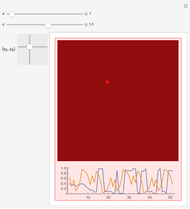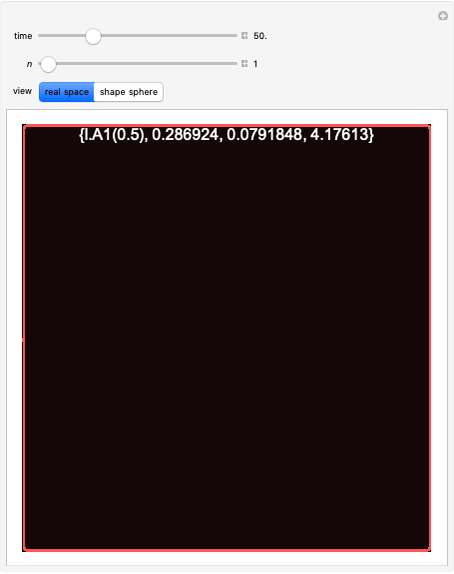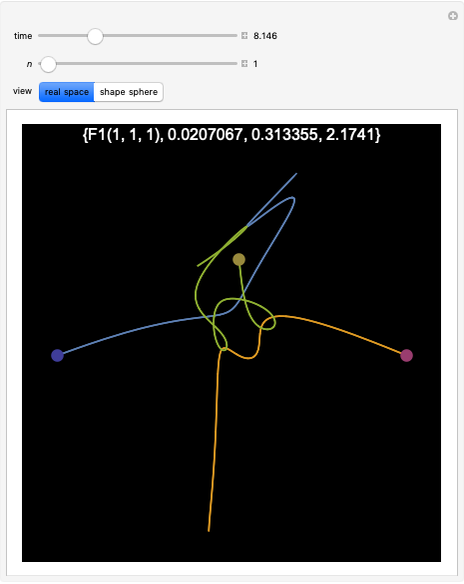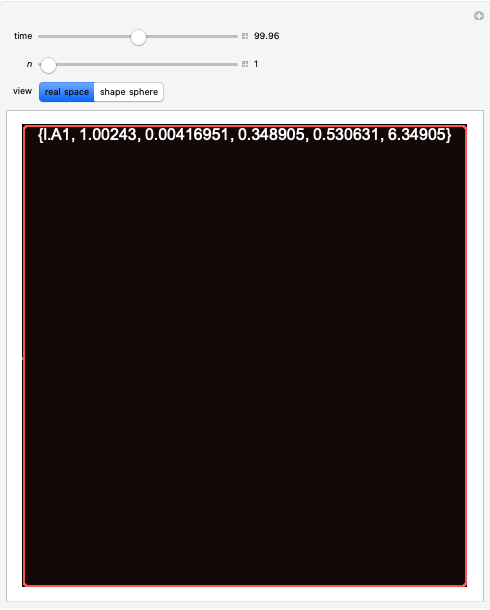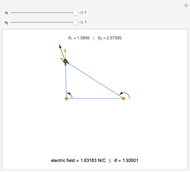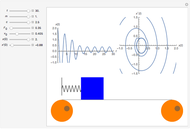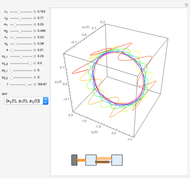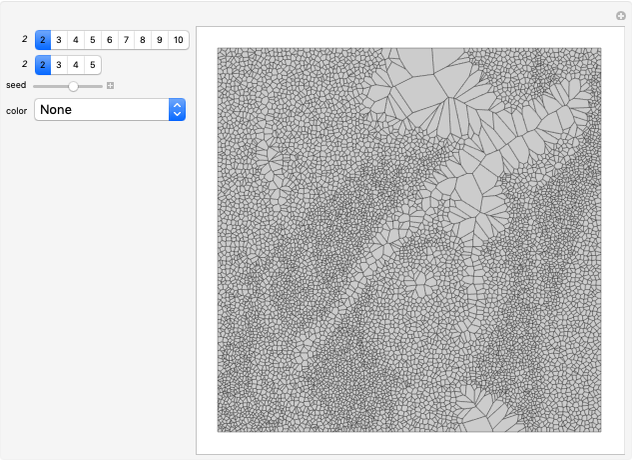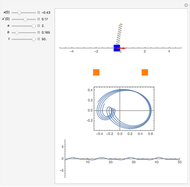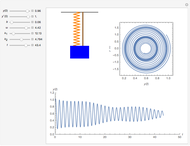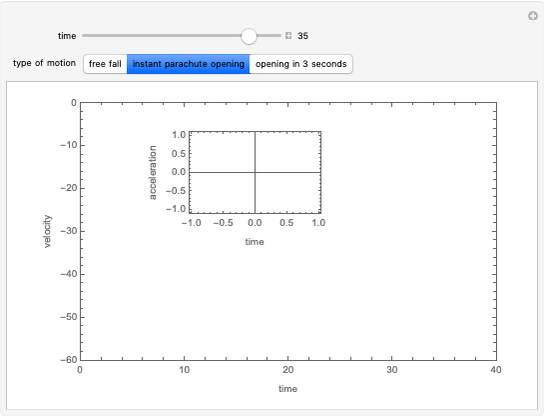The Zaslavskii Map

Requires a Wolfram Notebook System
Interact on desktop, mobile and cloud with the free Wolfram Player or other Wolfram Language products.
The Zaslavskii map arose from consideration of the problem of a dissipative kicked rotor; it exhibits chaotic behavior. It is claimed to be the simplest problem producing a strange attractor. The approach described involves the so-called action-angle variables of Hamiltonian dynamics (in which frequencies can be obtained without actually solving the equations of motion).
Contributed by: Enrique Zeleny (November 2014)
Open content licensed under CC BY-NC-SA
Details
Start with the equations of the perturbed system in the variables  and
and  :
:
 ,
,
 ,
,
where  is the action for the stable limit cycle
is the action for the stable limit cycle  (the dimensionless parameter of the perturbation) and
(the dimensionless parameter of the perturbation) and  is the periodic pulse.
is the periodic pulse.
Choosing
 ,
,
 ,
,
integrating between successive pulses, and making the substitutions
 ,
,
 ,
,
 ,
,
 ,
,
the mapping can be rewritten as
 ,
,
 ,
,
with
 .
.
References
[1] G. M. Zaslavsky, "The Simplest Case of a Strange Attractor," Physics Letters A, 69(3), 1978 pp. 145–147. doi:10.1016/0375-9601(78)90195-0.
[2] G. Zaslavsky, "Zaslavsky Map," Scholarpedia, 2(5):2662, 2007. doi:10.4249/scholarpedia.2662.
[3] G. Hanchinamani and L. Kulakarni, "Image Encryption Based on 2-D Zaslavskii Chaotic Map and Pseudo Hadmard Transform," International Journal of Hybrid Information Technology, 7(4), 2014 pp. 185–200. www.sersc.org/journals/IJHIT/vol7_no4_ 2014/16.pdf.
Snapshots
Permanent Citation








